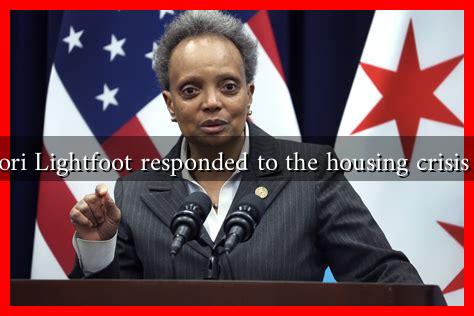-
Table of Contents
How Has Lori Lightfoot Responded to the Housing Crisis in Chicago?
The housing crisis in Chicago has been a pressing issue for years, exacerbated by economic disparities, the COVID-19 pandemic, and rising housing costs. As the city’s first Black female mayor, Lori Lightfoot has faced the challenge of addressing this crisis head-on.
. Her administration has implemented various strategies aimed at increasing affordable housing, combating homelessness, and revitalizing neighborhoods. This article explores Lightfoot’s responses to the housing crisis in Chicago, highlighting key initiatives, challenges, and outcomes.
Understanding the Housing Crisis in Chicago
Before delving into Lightfoot’s responses, it is essential to understand the context of the housing crisis in Chicago. The city has long struggled with issues such as:
- High rates of homelessness, with over 65,000 individuals experiencing homelessness in 2020.
- Rising housing costs, with the median home price in Chicago increasing by 10% from 2020 to 2021.
- Disparities in housing access, particularly affecting communities of color and low-income families.
These factors have created a complex landscape that requires multifaceted solutions.
Key Initiatives by Lori Lightfoot
Since taking office in May 2019, Lori Lightfoot has launched several initiatives aimed at addressing the housing crisis. Some of the most notable include:
1. The Chicago Housing Plan
In 2020, Lightfoot unveiled a comprehensive housing plan that aims to create and preserve 1,000 units of affordable housing annually. This plan focuses on:
- Increasing funding for the Affordable Housing Trust Fund.
- Encouraging private developers to include affordable units in new projects.
- Revitalizing vacant properties to provide housing options for low-income families.
The plan also emphasizes the importance of community engagement, ensuring that residents have a voice in housing developments in their neighborhoods.
2. Addressing Homelessness
Lightfoot’s administration has prioritized efforts to combat homelessness through various programs, including:
- The “Homeward Bound” initiative, which aims to provide permanent housing solutions for individuals experiencing homelessness.
- Increased funding for shelters and supportive services, particularly during the COVID-19 pandemic.
- Collaboration with non-profit organizations to provide mental health and addiction services to those in need.
These efforts have shown promise, with reports indicating a decrease in homelessness rates in certain areas of the city.
3. Zoning Reforms
To facilitate the development of affordable housing, Lightfoot has pushed for zoning reforms that allow for greater density in residential areas. This includes:
- Streamlining the approval process for affordable housing projects.
- Encouraging mixed-use developments that combine residential and commercial spaces.
- Implementing policies that promote equitable development in historically marginalized neighborhoods.
These reforms aim to create more housing options while fostering economic growth in underserved areas.
Challenges and Criticisms
Despite these initiatives, Lightfoot’s administration has faced significant challenges and criticisms. Some of the key issues include:
- Resistance from community groups and residents who fear that new developments may lead to gentrification.
- Budget constraints that limit the city’s ability to fund affordable housing projects adequately.
- The ongoing impact of the COVID-19 pandemic, which has strained resources and increased housing instability.
These challenges highlight the complexity of addressing the housing crisis and the need for continued advocacy and collaboration among stakeholders.
Conclusion
Lori Lightfoot’s response to the housing crisis in Chicago reflects a commitment to creating a more equitable and sustainable city. Through initiatives aimed at increasing affordable housing, addressing homelessness, and reforming zoning laws, her administration has made strides in tackling this multifaceted issue. However, significant challenges remain, necessitating ongoing efforts and collaboration among city officials, community organizations, and residents. As Chicago continues to navigate its housing crisis, the effectiveness of Lightfoot’s policies will be crucial in shaping the future of housing in the city.
For more information on Chicago’s housing initiatives, you can visit the Chicago Department of Housing.




